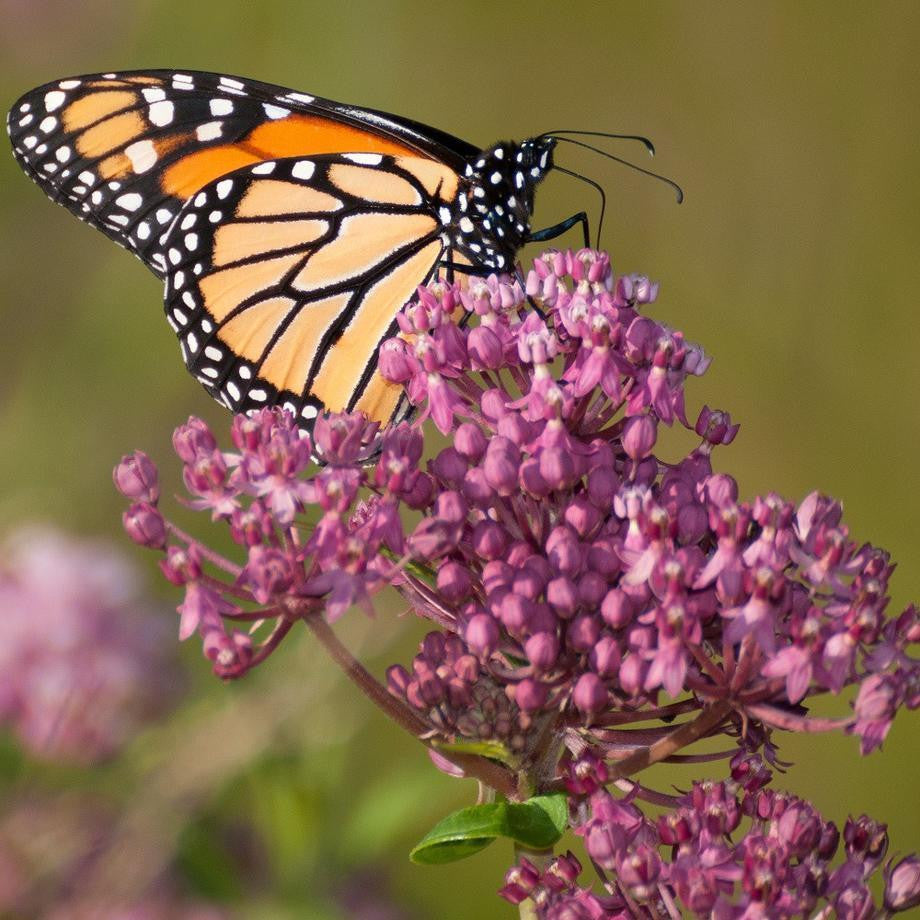
ASCLEPIAS INCARNATA~SOULMATE~PERENNIAL PLANT SUMMER BULB BUTTERFLY FLOWER ROOTS
1 ROOTS * 3 ROOTS * OR 5 ROOTS
- Botanical Name: Asclepias incarnata 'Soulmate'
- Common Name: Butterfly weed, Swamp Milkweed
- Bloomtime: June to August
- Flower: Clusters of magenta flowers
- Plant Height: 32 to 40 inches
- Foliage: Dark green
- Plant size: Bare root, 3 to 5 inches in length.
- Requirements: Full Sun. Average, dry to medium, well drained soil.
- Suggested use: Butterfly garden, Native
- Life-cycle: Perennial
- Multiply: Yes
- USDA Hardiness Zone: 3-8
Tolerate: Deer, Clay Soil, Wet Soil
Culture
Easily grown in medium to wet soils in full sun. Surprisingly tolerant of average well-drained soils in cultivation even though the species is native to swamps and wet meadows. Plants have deep taproots and are best left undisturbed once established. Foliage is slow to emerge in spring.
Noteworthy Characteristics
Asclepias incarnata, commonly called swamp milkweed, is an
erect, clump-forming, Missouri native plant which is commonly found in
swamps, river bottomlands and wet meadows throughout the State. It
typically grows 3-4' tall (less frequently to 5') on branching stems.
Small, fragrant, pink to mauve flowers (1/4" wide), each with five
reflexed petals and an elevated central crown, appear in tight clusters
(umbels) at the stem ends in summer. Flowers are uncommonly white.
Narrow, lance-shaped, taper-pointed leaves are 3-6" long. Stems exude a
toxic milky sap when cut. Flowers are followed by attractive seed pods
(to 4" long) which split open when ripe releasing silky-haired seeds
easily carried by the wind. Flowers are very attractive to butterflies
as a nectar source. In addition, swamp milkweed is an important food
source (albeit somewhat less important than upland species of Asclepias) for the larval stage of Monarch butterflies.
Genus name honors the Greek god Asklepios the god of medicine.
Specific epithet means flesh-colored.
‘Soulmate’
typically grows 3-3.5’ tall on branching stems and is basically a deep
rose pink form of the pink/mauve-flowered Missouri native species.
Garden Uses
Sunny borders, stream/pond banks, butterfly gardens. A good plant for low spots or other moist areas in the landscape.
Knowing your Hardy Zone
Below is a USDA Hardiness zone map. Simply pick your state, pinpoint the area in which you live then match your color with the color coded chart to find your hardiness zone. I'll use myself (area) as an example; I have a plant that is hardy in zones 3-9 and am located in North Idaho. On the map it shows that my color is dark green which is zone 6a so following the planting and care instructions given for this plant, I will have great success in growing this plant in my garden!

